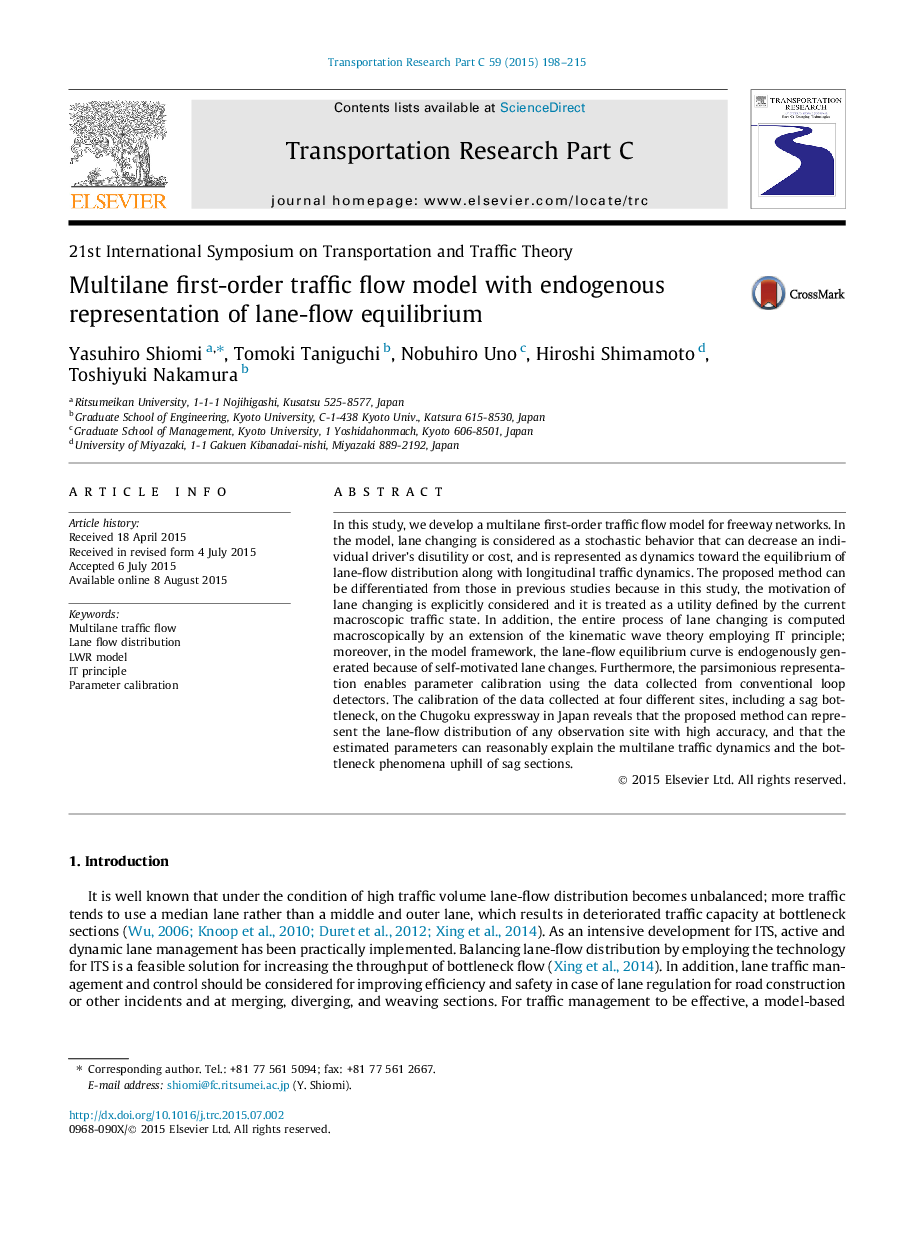| Article ID | Journal | Published Year | Pages | File Type |
|---|---|---|---|---|
| 524865 | Transportation Research Part C: Emerging Technologies | 2015 | 18 Pages |
•We develop a multilane first-order traffic flow model for freeway networks.•In the model, lane-flow equilibrium curve is endogenously generated.•Parsimonious representation enables parameter calibration using conventional data.•Estimated parameters can reasonably explain the multilane traffic dynamics at sag.
In this study, we develop a multilane first-order traffic flow model for freeway networks. In the model, lane changing is considered as a stochastic behavior that can decrease an individual driver’s disutility or cost, and is represented as dynamics toward the equilibrium of lane-flow distribution along with longitudinal traffic dynamics. The proposed method can be differentiated from those in previous studies because in this study, the motivation of lane changing is explicitly considered and it is treated as a utility defined by the current macroscopic traffic state. In addition, the entire process of lane changing is computed macroscopically by an extension of the kinematic wave theory employing IT principle; moreover, in the model framework, the lane-flow equilibrium curve is endogenously generated because of self-motivated lane changes. Furthermore, the parsimonious representation enables parameter calibration using the data collected from conventional loop detectors. The calibration of the data collected at four different sites, including a sag bottleneck, on the Chugoku expressway in Japan reveals that the proposed method can represent the lane-flow distribution of any observation site with high accuracy, and that the estimated parameters can reasonably explain the multilane traffic dynamics and the bottleneck phenomena uphill of sag sections.
